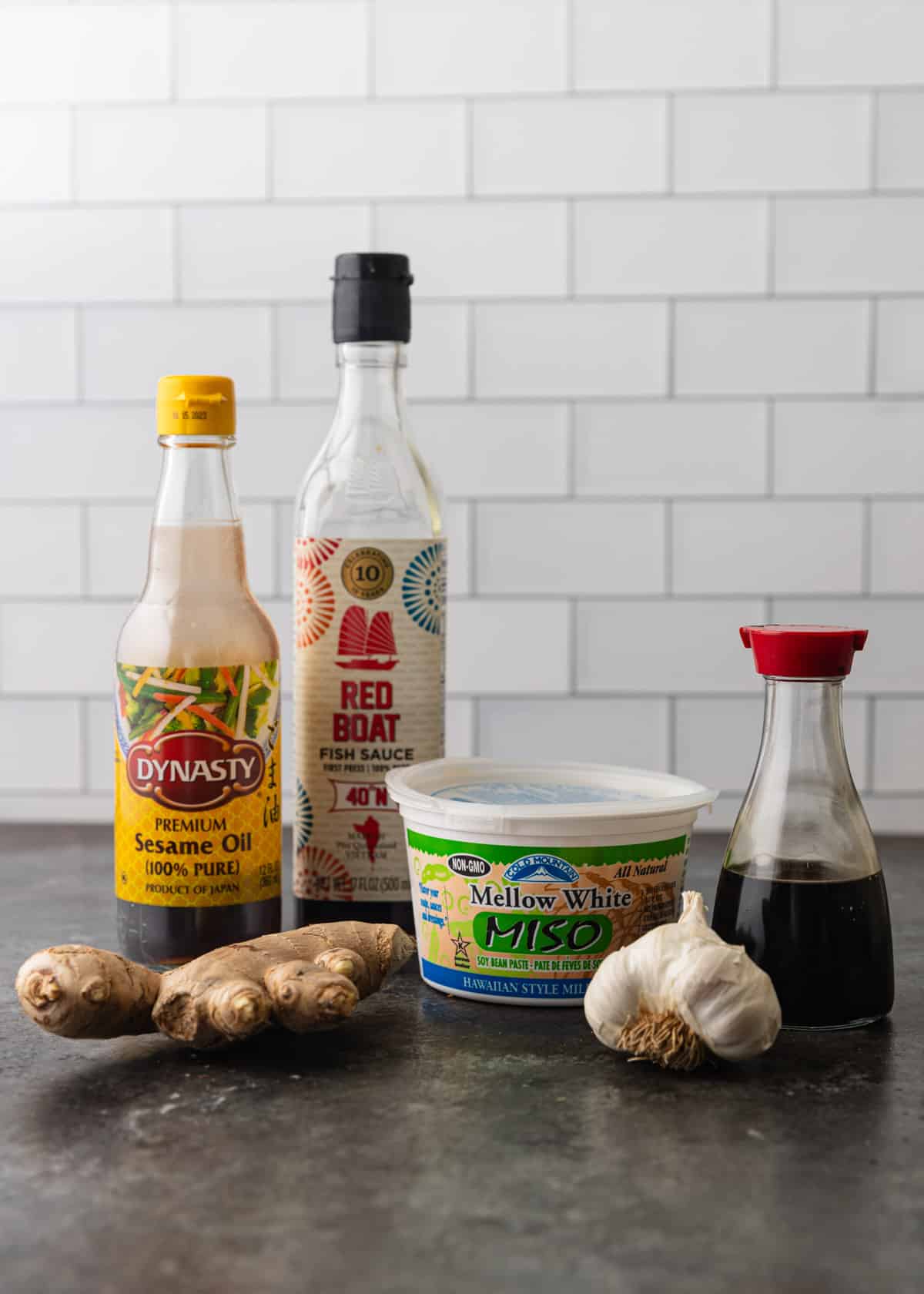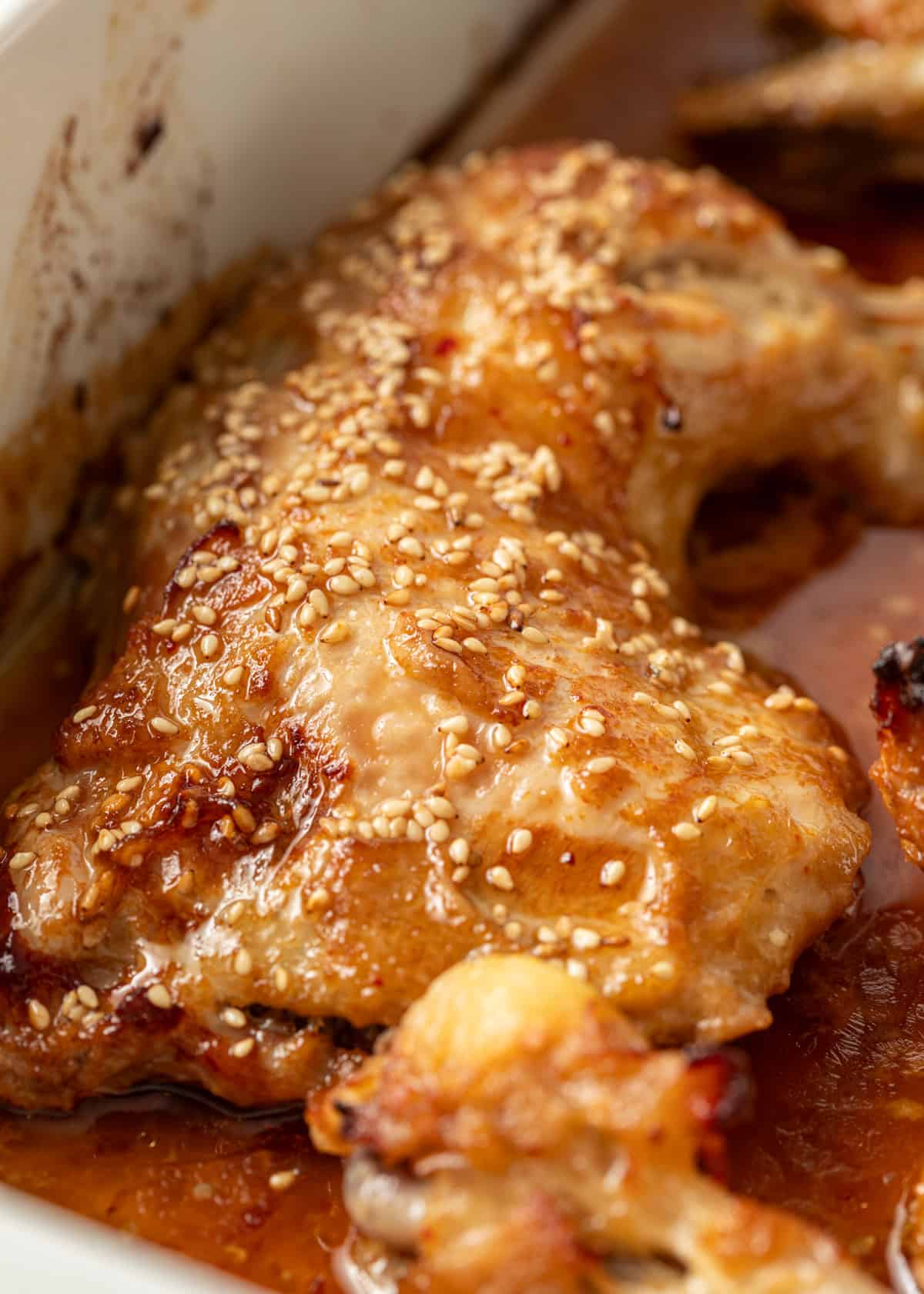published Feb 28, 2024 Roasted miso chicken pairs one of my favorite proteins with one of my favorite Asian ingredients! Miso, a staple in Japan for over 1,300 years, is crafted through fermenting soybeans with koji, derived from fermented rice, barley, or soybeans. This paste, rich in umami, emerges from a traditional process, resulting in a versatile ingredient with deep flavors. Fermented miso paste has a one-of-a-kind taste you won’t find anywhere else. It’s nutty and salty, sweet and savory, and features that tangy, earthy flavor characteristic of fermented ingredients. I throw it into a marinade along with other sauces, oils, and seasonings that complement all of those unique notes: salty fish sauce, nutty toasted sesame oil, and that spicy ginger and garlic combo. And when it bakes onto the chicken skin as it melts and renders in the oven, that golden glaze is just heavenly! Looking for other ways to use the rest of your white miso paste? Try it in this delicious tahini dressing to make some flavorful Asian-inspired salads, this tasty chilled ramen salad, or some warm and comforting miso soup.
Recommended Tools
Roasting Pan – These pans are very handy for recipes that involve long roasting times and frequent basting. They come with a rack that prevents the bottom of whatever you’re roasting from overcooking, and they leave plenty of room for cooking large cuts of meat.
Storing and Reheating
Transfer uneaten miso chicken to an airtight container and refrigerate for up to 4 days. White miso, or “shiro miso,” is milder and sweeter, making it ideal for dressings and lighter soups. The choice between these two depends on your recipe; red for robustness, white for a gentle, sweet touch. I preferred using the white miso for the lighter, sweet touch it adds to the chicken and delicious pan sauce drippings.
Chicken – I make my miso chicken recipe with skin-on, bone-in thighs for that golden brown skin and moist, juicy dark meat. But it’s also delicious with breasts and boneless thighs! Just note the different roasting times and temperatures detailed in the recipe card if you make that substitution. Vegetable Oil – Some other great oils to use in marinades include canola, avocado oil, and olive oil. And if you really want to heighten the flavors of the sesame oil and sesame seeds, try peanut oil! White Miso – This ingredient has a light, nutty sweetness to it that’s complemented by its natural saltiness. It’s the most mild of the misos. Toasted Sesame Oil – Note that toasted sesame oil is different from sesame oil — it’s a very strong oil with a significant nutty flavor. Fish Sauce – No need for added salt with this ingredient present! Savory and earthy, fish sauces pair deliciously with the sweet marinade. Fresh Ginger – Freshly grated ginger will add an incredibly appetizing aroma to the marinade. Garlic – Did you know that garlic helps to tenderize meats in marinades? It’s more than a flavoring agent! Sesame Seeds – The final touch that ties all of the flavors in this miso chicken recipe together — with some great texture, too.
To reheat leftover miso chicken without overcooking the meat, microwave in short bursts — just 15 to 30 seconds — along with any leftover juice until warmed through. Love this recipe? Share it with the world on Pinterest.












